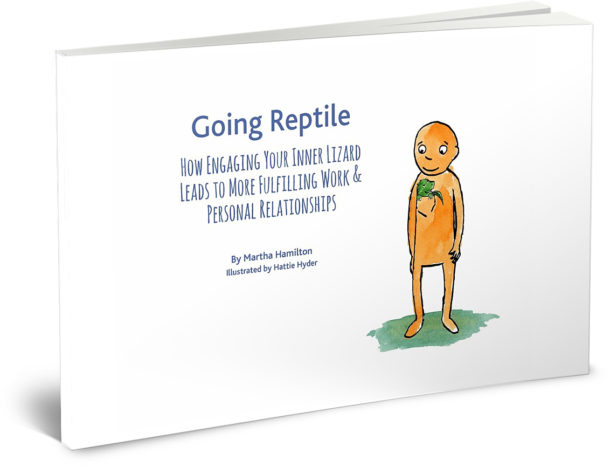In the past few posts, we’ve covered the basics of WHY we might want to take a look at how we, and others, react to stressful situations and environments (VUCA: Volatility, Uncertainty, Complexity, and Ambiguity). To review, when we react, we begin to lose access to our prefrontal cortex – and precisely the capacities we need to have fully online to address VUCA environments.
By getting to know subtle indicators of reactivity, or Going Reptile, we can see more clearly what is happening – the first step to addressing any issue. There are four main categories of reactions: Fight, Flight, Freeze and Fawn. Each category has multiple styles – ways that reactivity shows up. By getting to know these different styles, it’s easier to see what is happening in and around us.
We’re going to start with an exploration of the various Fight Styles, which are all characterized by aggression. The fight styles show up in different ways. Some examples are: being the one who knows the only way that’s right, puffing oneself up to be better than others, and schmoozing to get what we need. Each of these look different on the outside. And, each of these styles shares the similarity that the person is fighting to stay safe.
The first of the three Fight Styles is named “The Director.”
People who tend to respond to stress as “The Director” are dominated by the need to feel in control. When someone with this reaction style feels threatened, they default into being the only one who knows what is right, in a very commanding way. This can show up as directing others, and, at it’s most extreme, as striking out with blame.
Indicators: Bossy, directive with others, increasingly aggressive as the tension increases, sometimes resulting in directed aggressive blame.
Like all the reactive styles, The Director style is the result of people, as children, finding ways to navigate stressful situations by themselves. For example: An older child who is put in charge of younger siblings may well find that directing them feels more safe than allowing them to run amok, particularly in a chaotic environment.
No matter the source of a habitual response, what worked for us at that time becomes habit as we grow. But a response that worked well at one time may hinder us in the present. For example, if you’re a manager at work and in response to a stressful situation you become overly directive, it could lead to a mutiny from your team. They may revolt against your management style, both directly and indirectly. What has happened, in essence, is that your directive reptilian response has triggered a reptilian response in your team—and everyone has lost access to their pre-frontal cortexes, and all the higher level capacities associated with them. And these are capacities that all of you need in order to address the stressful context or situation you’re in most effectively.
So what do you do about your Reptilian responses? The following is an overview of what you can do. We’ll dig further into this in future posts.
Observation: Get to know the reactive styles that are showing up in ourselves, and those around us.
Understanding: Reactivity is wired into all of us – it is not a flaw. It’s a human safety feature, perhaps not a feature that still serves us in a work context.
Get and Stay connected: Shame, blame, complaining, explaining, justifying, defending and denying are indicators of disconnection – from ourselves and others. If we are going to face VUCA environments (volatile, uncertain, complex and ambiguous) with the capacity to navigate them effectively, connection is required. If we’re blaming ourselves or others for our reactive styles, we’re not heading anywhere productive or effective. And, we’re inadvertently reinforcing varying degrees of shutdown in ourselves and others.
What we resist persists: Getting this is key. Whether it’s your reactive style or someone else’s, resisting it, trying to make it different, or trying to get it to go away – whatever “it” is in the moment – only makes the situation worse. This is counter-intuitive, and often not so easy to really get at levels beyond a basic intellectual understanding.
Get to know your styles: This brings us back to observation. Compassion is central to loosening reactive styles. If you blame yourself or others for how they react, the safety styles become more entrenched and cleverer. Their job is protection. They do it well. By learning to see and get to know your own and other’s styles, and by appreciating that they were created for a reason, the styles, the protections, can begin to relax. More of the pre-frontal cortex becomes accessible, and effectiveness and capacity expand.
In the next post, we’ll continue to explore the different Fight Styles

